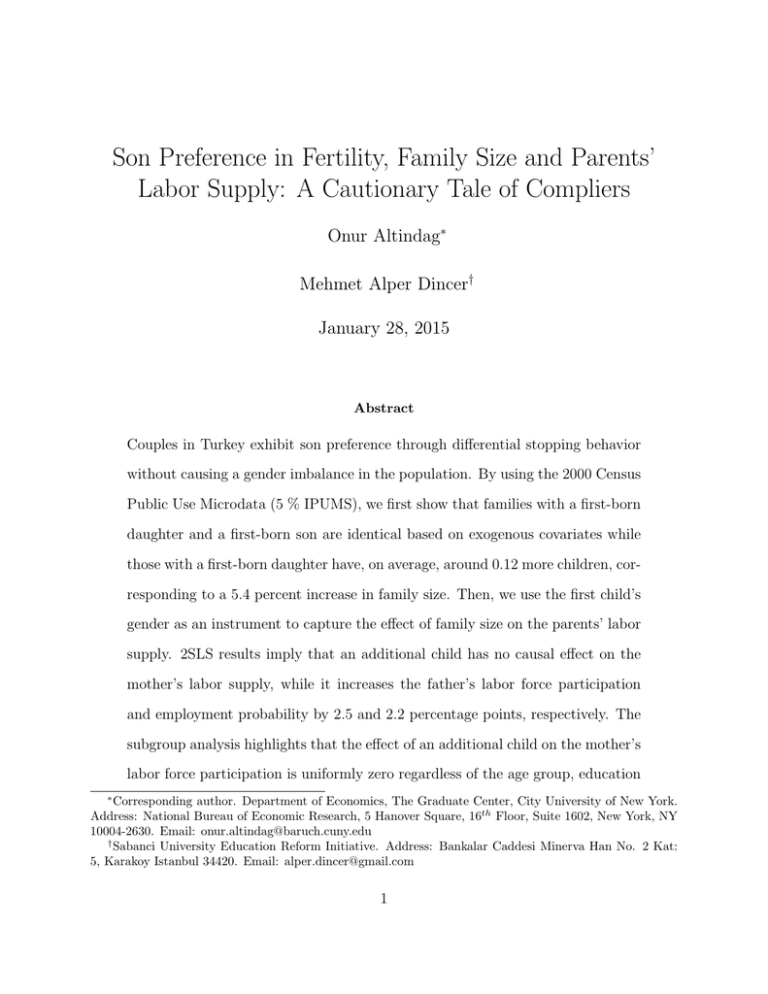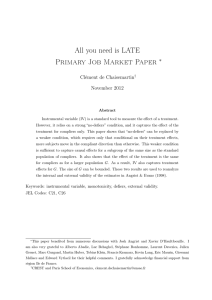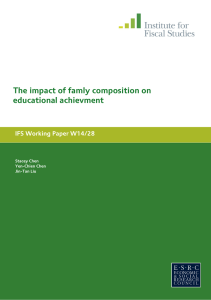Son Preference in Fertility, Family Size and Parents’ Onur Altindag
advertisement

Son Preference in Fertility, Family Size and Parents’ Labor Supply: A Cautionary Tale of Compliers Onur Altindag∗ Mehmet Alper Dincer† January 28, 2015 Abstract Couples in Turkey exhibit son preference through differential stopping behavior without causing a gender imbalance in the population. By using the 2000 Census Public Use Microdata (5 % IPUMS), we first show that families with a first-born daughter and a first-born son are identical based on exogenous covariates while those with a first-born daughter have, on average, around 0.12 more children, corresponding to a 5.4 percent increase in family size. Then, we use the first child’s gender as an instrument to capture the effect of family size on the parents’ labor supply. 2SLS results imply that an additional child has no causal effect on the mother’s labor supply, while it increases the father’s labor force participation and employment probability by 2.5 and 2.2 percentage points, respectively. The subgroup analysis highlights that the effect of an additional child on the mother’s labor force participation is uniformly zero regardless of the age group, education ∗ Corresponding author. Department of Economics, The Graduate Center, City University of New York. Address: National Bureau of Economic Research, 5 Hanover Square, 16th Floor, Suite 1602, New York, NY 10004-2630. Email: onur.altindag@baruch.cuny.edu † Sabanci University Education Reform Initiative. Address: Bankalar Caddesi Minerva Han No. 2 Kat: 5, Karakoy Istanbul 34420. Email: alper.dincer@gmail.com 1 or the place of residence. Moreover, the increase in the father’s labor supply is driven by young and educated compliers who live in urban areas. The counterfactual analysis, however, reveals that the documented causal effects of family size on female labor supply have very limited external validity. In the urban market, compliers are negatively selected, which manifests as a significantly lower labor supply of son-preferring mothers relative to the overall population in the untreated state. On the contrary, complier labor force supply is high, which is reflective of the overall female population in the rural market, where nearly 94 percent of employed women work in small-scale family farms as unpaid family workers. We argue that the opportunity cost of an additional child may be relatively small in the rural market since women’s allocation of time between home and farm is flexible and does not involve any transportation costs. Therefore, labor supply and childbearing do not appear as a stark trade-off in the rural areas. On the other hand, in the urban market, compliers are mostly specialized in domestic production after the first child and additional children do not alter the female labor supply. 2







